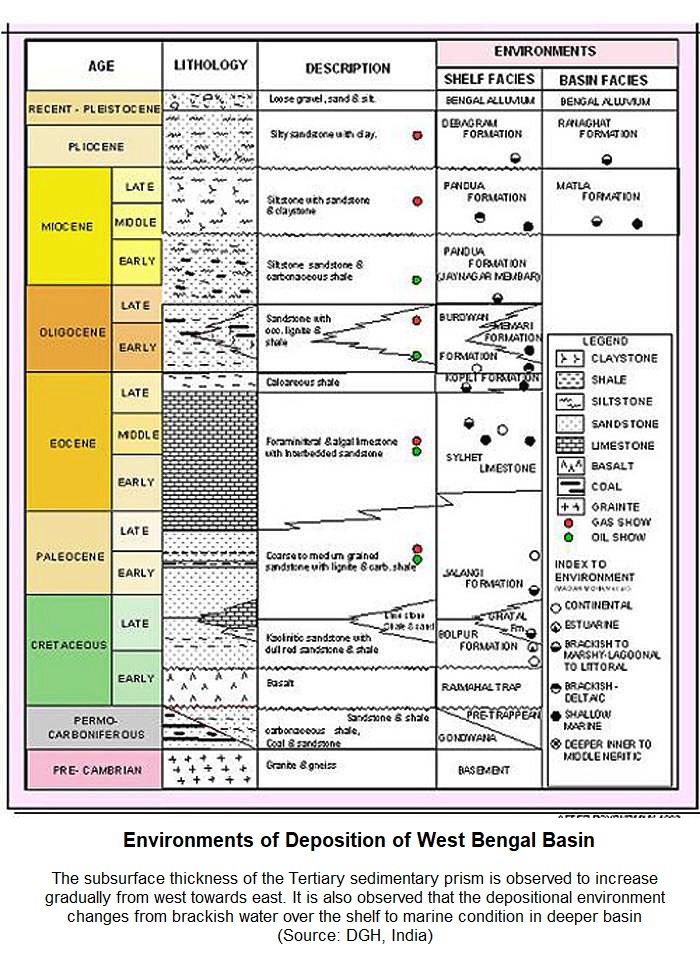Ranaghat Fm
Type Locality and Naming
Type section is in the well Ranaghat – 1, Interval is 171-2705 m according to original definition Chandra et al. (1993) revised the top and bottom to be between 1000-3016 m respectively. [Original Publication: Biswas, B. (1963) Results of exploration for Petroleum in the Western part of Bengal Basin, India. Proc. 2nd Symp. Dev. Petrol Res. ECAFE Mins. Res. DeVol. Ser No. 18, pt 1, pp. 241-250.]
[Figure 1: Location map showing tectonic elements and drilled wells (after R.N Dwivedi in Raju and Misra, 2009)]
Lithology and Thickness
Sandstone. The Ranaghat Formation represents the sand equivalent of the Debagram Fm. In type section, it comprises fine- to very fine-grained, grey to greyish white, white sandstone. Minor silt and shale are also present. The Ranaghat Formation, wherever present, includes considerable sedimentary thickness. It is of the order of 2500 – 3000 m in Deganga - Bodra - shallow marine Miocene prospect area.
[Figure 1: West Bengal Basin lithostratigraphy (after R.N. Dwivedi in Raju and Misra, 2009) with red-arrow showing position of this formation]
Relationships and Distribution
Upper contact
Upper contact is unconformable with the Bengal Alluvium Fm.
Regional extent
West Bengal basin – more basinal facies (coeval with Debagam Fm)
GeoJSON
Fossils
The formation mainly consists of smaller benthic foraminifera such as Brizalina, Ammonia beccarii, Bolivina, Cibicides etc, besides Chiloguembelina globigesina and few globigerines.
Age
Depositional setting
Deltaic to shallow-marine environment of deposition.
[Figure: Environments of Deposition of West Bengal Basin (from dghindia.gov.in)]
Additional Information


